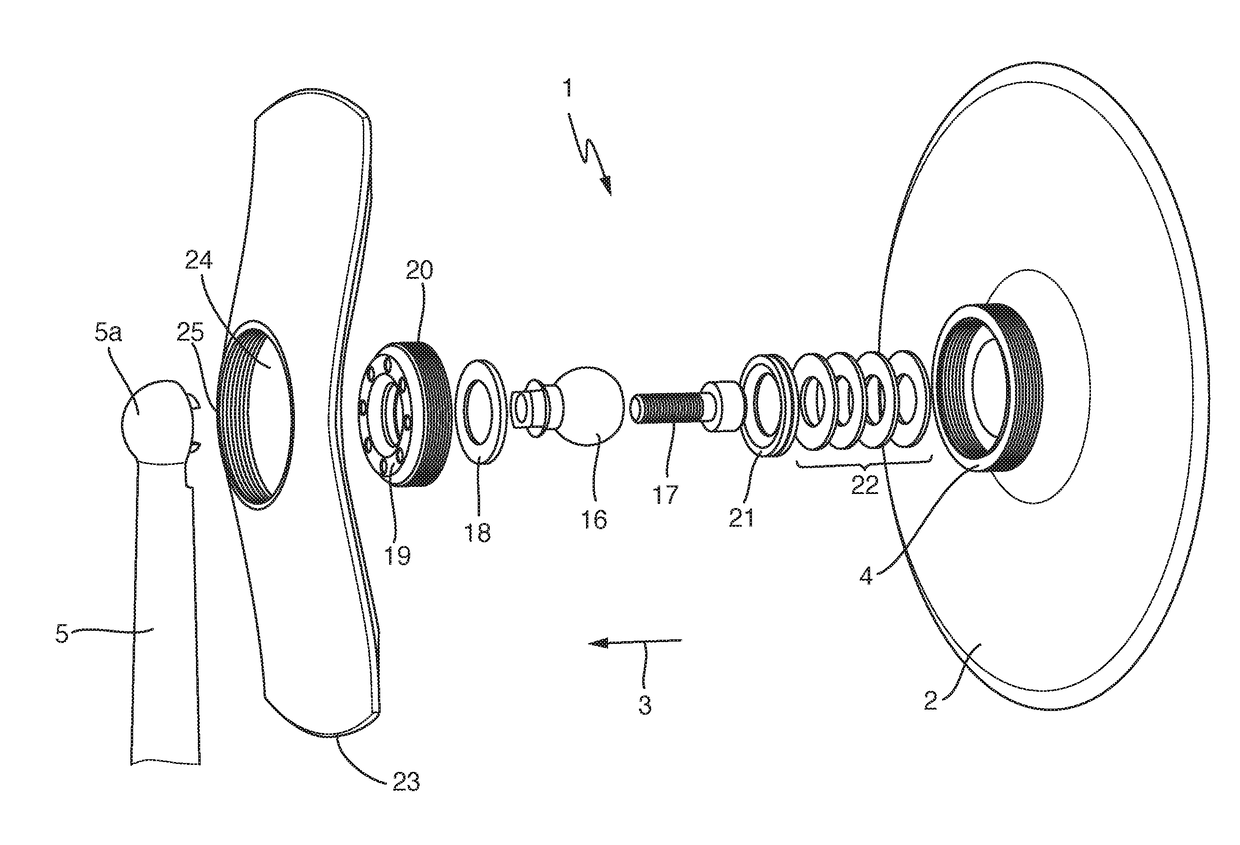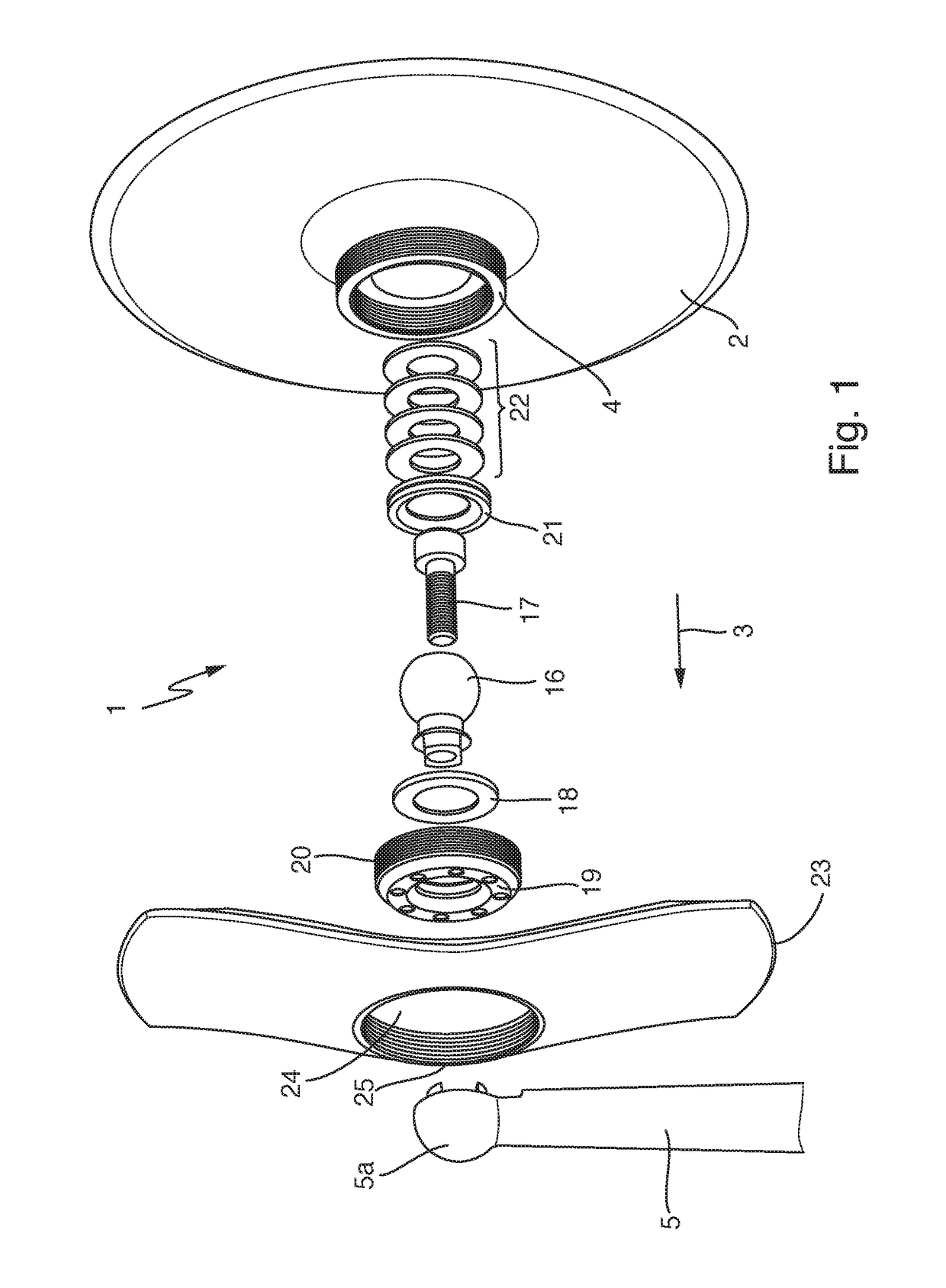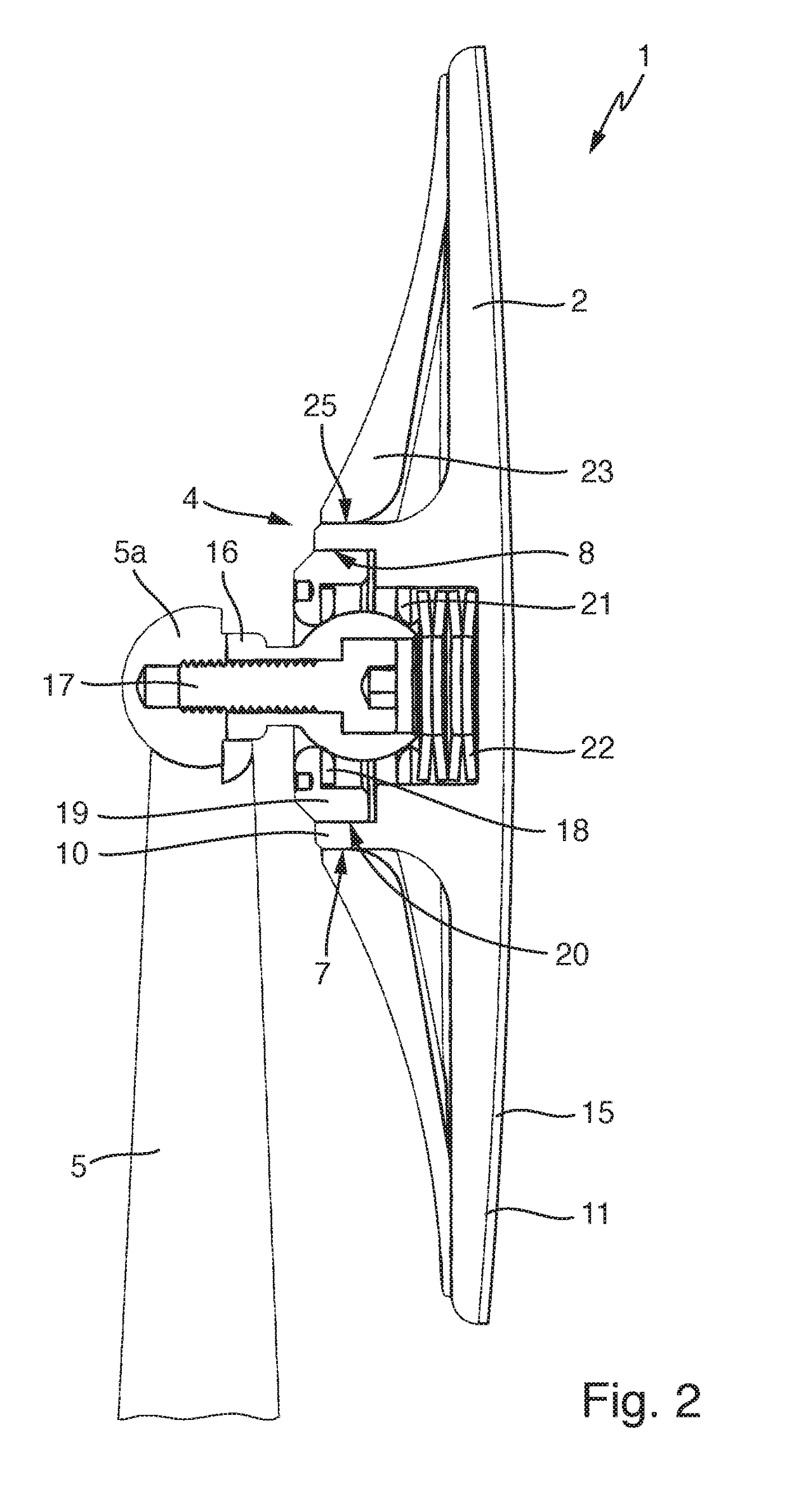Rear-view mirror for a two-wheeled vehicle, and method for the manufacture thereof
a rearview mirror and two-wheeled technology, applied in the direction of cycle mirrors, optical viewing, cycle equipment, etc., can solve the problems of compromising traffic safety, affecting the safety of drivers, and the mirror glass used in conventional rear-view mirrors is a significant safety risk, etc., to achieve streamlined shape, specific shape, and specific appearance
- Summary
- Abstract
- Description
- Claims
- Application Information
AI Technical Summary
Benefits of technology
Problems solved by technology
Method used
Image
Examples
Embodiment Construction
[0041]The present invention relates to a rear-view mirror for a two-wheeled vehicle, and to a method for the manufacture thereof. Conventional rear-view mirrors known from the prior art generally have a housing made of metal or plastics material, and separate mirror glass that forms the reflective surface of the rear-view mirror and is fastened in the mirror housing. Suitable rubber or plastics damping elements are usually arranged between the mirror housing and the mirror glass in order to keep vibrations caused by an engine of the two-wheeled vehicle or by carriageway unevenness away from the mirror glass or to transfer said vibrations to said mirror glass only in a damped manner, such that damage to, in particular breakage of, the mirror glass is prevented. Manufacturing a rear-view mirror of this kind requires relatively significant outlay in terms of material and time requirements. Different machines are required for manufacturing the housing, the mirror glass and the damping e...
PUM
 Login to View More
Login to View More Abstract
Description
Claims
Application Information
 Login to View More
Login to View More - R&D
- Intellectual Property
- Life Sciences
- Materials
- Tech Scout
- Unparalleled Data Quality
- Higher Quality Content
- 60% Fewer Hallucinations
Browse by: Latest US Patents, China's latest patents, Technical Efficacy Thesaurus, Application Domain, Technology Topic, Popular Technical Reports.
© 2025 PatSnap. All rights reserved.Legal|Privacy policy|Modern Slavery Act Transparency Statement|Sitemap|About US| Contact US: help@patsnap.com



